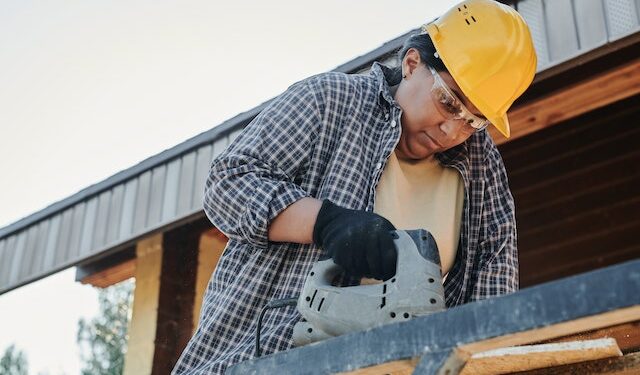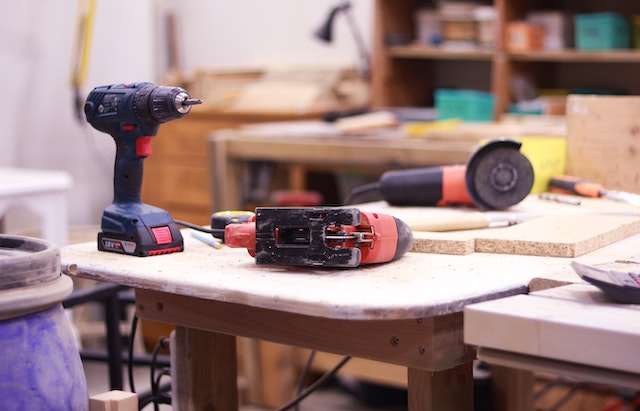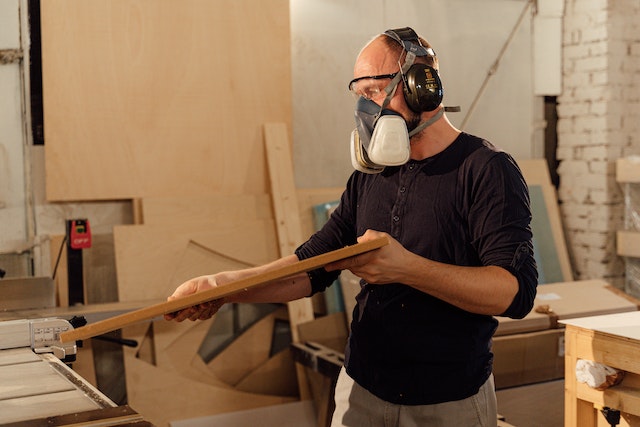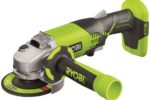How To Cut Curves With A Jigsaw

Ah, curves! The most stunning sight in any workshop. Sure, you can buy furniture with perfect curves and elegant shapes, but nothing can quite match the satisfaction of creating and cutting them with your own two hands. Of course, if you don’t know what you’re doing, it can be a nightmare. Fortunately, I’m here to show you how to cut curves with a jigsaw. Let’s get started!
First things first: you’re going to want to get the right jigsaw. This is the most important part of the process, so be sure to do your research. Go to your local home improvement store and ask the experts, or do an online search. Make sure you get one that has a nice balance between power, finesse, and control.
Now it’s time for the most important step of all – practice. I know this goes without saying, but the more you practice, the better you’ll become. Start by cutting straight lines at different angles. Then move on to curves – take a ruler and draw multiple curved lines with a pencil and cut them, just to get the hang of it all. Don’t worry, you’ll gradually get better and better with each practice session.
Before you start cutting your curves, you’ll need to get your workspace ready. Put together all the necessary tools – saw, safety glasses, clamps, and maybe a sacrificial piece of scrap wood. Make sure your jigsaw is properly clamped down, and you’re all set.
Now comes the fun part – learning the “grain” of your wood. Woods like oak, mahogany and beech have a distinct grain, and it’s important to keep this in mind when making curved cuts. Your jigsaw blade should follow the grain as you cut, so you don’t end up with a ragged edge.
Now, finally, you’re ready to go curve crazy. Start by taking light, slow passes – too much power and you could ruin the entire job. You can use a steady hand and your jigsaw’s speed and power controls to gradually go deeper and deeper – just take your time and don’t rush it.
Lastly, once your beautiful curves are cut, it’s time for the final touches. Sand down any rough edges, use some fine steel wool to bring out the natural beauty of the wood, and apply a finish. Now you can proudly put the fruits of your labor on display in your home, and show off your jigsaw masterpiece!
Get The Right Jigsaw

I’m gonna’ show you how to cut those curves with a jigsaw. But first, you gotta’ make sure you get the right jigsaw for the job.
Now, there are a lot of different jigsaws out there, so it can be a bit overwhelming. But don’t stress- I got you covered.
First thing’s first- you want a jigsaw that can do more than just the typical straight cuts. Look for jigsaws with blades that can cut at different angles – 45 degrees, 90 degrees, and even those fancy curved lines. That way you can get your curves cut nice and precise.
And the blade is important too- you want a blade that is sturdy and made to last. That way it won’t bend or break when you’re using it. And make sure it has good teeth, so it can cut even the toughest of woods.
It also helps to get a jigsaw with good speed control. You want one that can go both low and high so you can adjust the speed to whatever level is best for each type of cut.
And last but not least, you’ll want to look for a jigsaw that has a dust blower. This will help keep the dust away from your cuts so you can see what you’re doing.
So there you have it- get the right jigsaw and you’ll be able to cut those curves like a pro!
Practice, Practice, Practice
Alright, now let’s talk about the most important thing when it comes to learning how to cut curves with a jigsaw and that’s practice, practice, and more practice! Let’s get real, cutting a curve with a jigsaw ain’t easy. It’s definitely not something you can master in a day and you really have to be prepared to put in a lot of hard work.
But don’t get too disheartened, once you get the hang of it, you’ll be a cutting pro in no time. The key is to actually practice cutting curves, like a lot! Set aside a space in your basement, backyard, or wherever you the peace and quiet to practice, you’ll need some stuff like scrap wood, clamps, safety glasses and hearing protection, so get those ready too.
Have you got yourself a good jigsaw yet? Make sure it has adjustable speed settings, but also think about the weight, depending on how much and how often you’ll be cutting curves, you don’t want something that’s too heavy or too cumbersome.
Start slow and steady with the jigsaw, you don’t want to go all out before you master the basic moves. Start by making straight cuts, remember to hold the saw’s handle firmly with one hand, and hold the saw itself with the other. Safety first!
Now, make sure you practice using scrap pieces of wood so you get a better feel for the jigsaw, also it would be a good idea to practice on different types of wood too. Go slow and be mindful of where you’re cutting. You can always adjust the settings on the saw, play around with them and find what works best for you.
Next, start with some basic curves, try and make a half-circle or a simple arc. Once you understand how the saw moves, you can then start making more complex curves. The key is to go slow and focus, resist the urge to make big and bold moves as that = things could get ugly real quick.
Practice also applies to the amount of pressure you apply while cutting. Different levels of pressure are required to make different types of cuts. Don’t forget to use plenty of lubricant to help with a smoother cut, it’s going to save you time and energy in the long run.
So there you have it, that’s the basics of learning how to cut curves with a jigsaw. Take your time, practice and stay safe! Before you know it, you’ll be a jigsaw cutting pro. Have fun!
Gearing Up For Success

Now that you’ve got the right jigsaw for the job, it’s time to get geared up for success. And by that, I mean you’ll need some sweet gear. How else you gonna cut that curve like a pro?
First up, you’ll need to get some protective gear. No silly jokes here, make sure you don a pair of safety goggles and some proper breathing protection. You don’t want any dust and wood chip particles getting into your eyes and nose. Trust me.
Once your eyes and lungs are adequately protected, you’ll need to grab your jigsaw. Make sure you do a quick check of the machine and be sure it’s functioning properly – you don’t want any malfunctions while you’re working with it. It’s also a really good idea to grab some extra jigsaw blades – they can sometimes cut through even the toughest wood like butter. And get yourself a few different sizes too – it’ll come in really handy when you have to make those weirdly shaped, difficult cuts.
Finally – and you might want to jump up and down like a kangaroo for this one – it’s time to mount the jigsaw onto your workbench. Be sure you secure it tight and fasten it properly. It’s going to be bouncing around everywhere, so the last thing you want is for it to go flying off the workbench and hitting you in the nose. That would be… unenjoyable.
And that’s it! You’re geared up! Now don your cape and mask, it’s time to get cutting some curves like a pro.
Learn the “grain” of your wood
Listen up, when it comes to jigsaws, think of wood as pasta. Wood has a “grain” just like pasta does. It can be long grain,quartersawn, or riftsawn, just like your favorite Lasagna. It’s important that you know what grain your wood is before you take your jigsaw to it.
And here’s why. The grain of the wood will determine the direction your jigsaw blade must travel. Long grain wood should be cut against the grain, while quartersawn or riftsawn wood should be cut with the grain. Get it wrong and you’ll find that you’re having a hard time making progress towards progress.
But don’t worry, I got you. It’s easier than it sounds. When it comes to figuring out the direction of the grain, look for the tell-tale signs. Squeeze the wood and feel the ridges, or look for the cross-hatching of the grain. If it looks like a pile of spaghetti, cut against the grain. If you’re still having trouble, grab a magnifying glass and take a closer look. It’ll all make sense in the end.
Now, before you get down to business, make sure you have the right blade fit for the job. Wood grain can be tough on blades, but if you pick the right one, you’ll sail through your jigsaw project with ease. A high-speed steel blade should do the trick.
Now you see what I mean about being pasta? It takes an attentive eye if you want to get the best from a jigsaw, wood grain has got your back on this one. Knowing thegrain will ensure a smooth, even cut, if you take heed. Cut against the grain, you get wood chips. With the grain and it’ll be like butter!
And that’s it. Now you know the grain of your wood, you can start thinking about coming up with curves!
Going Curve Crazy

Do you need to take a straight line and transform it into an exquisite curve? The first step is getting the right jigsaw. Check out my ‘Get the right jigsaw’ section to make sure you have all the right gear. Now it’s time to get wild!
Let’s start with the basics: you’ll be guiding the jigsaw while it cuts the wood. Start by choosing a point where you want the saw to begin cutting. Use a good-quality pencil to mark the start and the end point of the curve. Then decide the curvature of the line that connects the two points. Sounds tricky, huh? Don’t worry. Just remember one simple rule – keep it slow and steady!
To start cutting, make sure the jigsaw blade is flat in the wood and make long and slow strokes along the curve. Keep a steady and consistent pressure to ensure smooth lines and don’t stop in the middle of a cut. Make sure to check that your blade is still perpendicular to the wood while you cut. If it’s not, you can easily adjust it with a turn of the wrist.
Once you feel comfortable cutting curves, you can get a bit daring. Angular cuts, parallel curves or curves close together are all possible with a jigsaw. To achieve curves a little tighter than those achievable by hand, you can use the jigsaw.Make sure that you reduce the stroke rate so that the blade doesn’t wander, and use a gentle pressure on the saw.
Okay, now that you feel like a pro…it’s time to try something a little more adventurous. Take your wood curve cutting to a whole new level with a beveled or curved cut. The key is to start out slow – once you get the hang of it, then you can speed up.
Use the same techniques as before and just make sure the blade remains perpendicular to the wood throughout the cut. Angle the jigsaw and flip the handle over to guide it along the curve. With the right angle, you can create some really stunning curves with your jigsaw and make your project look truly amazing.
When making curved cuts with a jigsaw, safety is key. Always wear safety glasses, and be sure to keep your jigsaw blade away from your body and clothing. Make sure your workspace is properly secured so that it doesn’t move when you are cutting.
Now get out there and go curve crazy with your jigsaw! It’s one of the most rewarding woodworking projects around and with the right tools, a little practice, and a lot of patience, you can create something utterly remarkable. Good luck!
Finishing Touches

The Finishing Touches. Now that you’ve perfected your jigsawing skills in mastering the art of jigsawing curves, it’s time to show off your artwork!
The first and most important step is to make sure that you’re proud of your work. Take a step back, admire your piece, and make sure it looks just the way you imagined.
The next step is to sand it down with a fine-grade sandpaper. You don’t want any splintering pieces or sharp edges. Smooth it out, so you can keep your artwork intact for years to come.
Finally, you can finish off your piece by staining it, painting it, or sealing it. Choose whatever route you want—just be sure to take the proper precautions in applying whatever finishes you might choose.
It’s important to remember that even the most seasoned jigsawers can fall prey to the same mistakes, so don’t get discouraged! Like anything else, with enough practice and patience, you’ll be cutting curves in no time. In the words of Pops, “If your jigsaw curves don’t cut true, don’t even let your saw prove you!”






